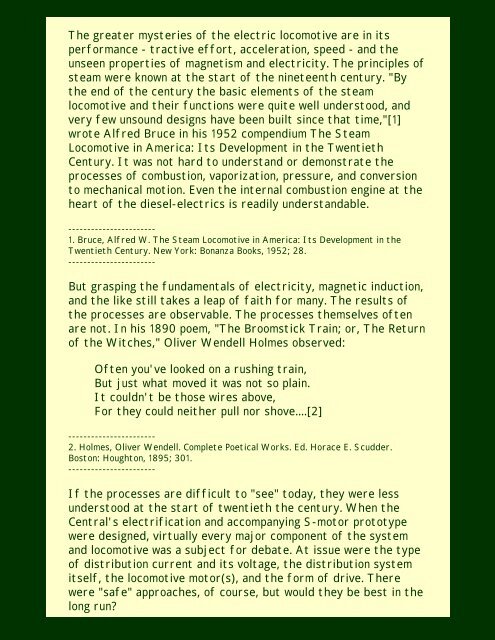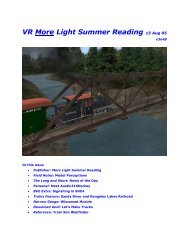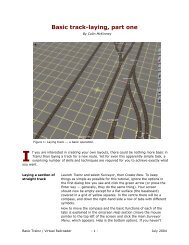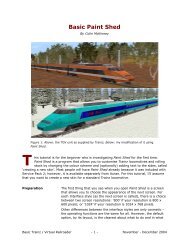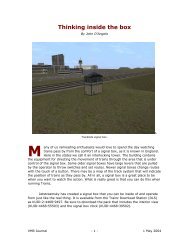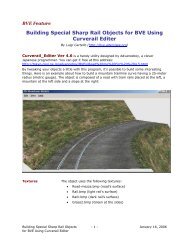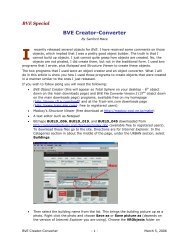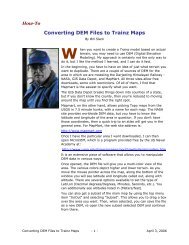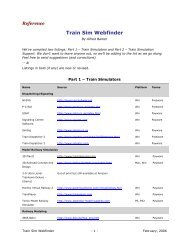Old Maude, Preface - Virtual Railroader
Old Maude, Preface - Virtual Railroader
Old Maude, Preface - Virtual Railroader
Create successful ePaper yourself
Turn your PDF publications into a flip-book with our unique Google optimized e-Paper software.
The greater mysteries of the electric locomotive are in its<br />
performance - tractive effort, acceleration, speed - and the<br />
unseen properties of magnetism and electricity. The principles of<br />
steam were known at the start of the nineteenth century. "By<br />
the end of the century the basic elements of the steam<br />
locomotive and their functions were quite well understood, and<br />
very few unsound designs have been built since that time,"[1]<br />
wrote Alfred Bruce in his 1952 compendium The Steam<br />
Locomotive in America: Its Development in the Twentieth<br />
Century. It was not hard to understand or demonstrate the<br />
processes of combustion, vaporization, pressure, and conversion<br />
to mechanical motion. Even the internal combustion engine at the<br />
heart of the diesel-electrics is readily understandable.<br />
-----------------------<br />
1. Bruce, Alfred W. The Steam Locomotive in America: Its Development in the<br />
Twentieth Century. New York: Bonanza Books, 1952; 28.<br />
-----------------------<br />
But grasping the fundamentals of electricity, magnetic induction,<br />
and the like still takes a leap of faith for many. The results of<br />
the processes are observable. The processes themselves often<br />
are not. In his 1890 poem, "The Broomstick Train; or, The Return<br />
of the Witches," Oliver Wendell Holmes observed:<br />
Often you've looked on a rushing train,<br />
But just what moved it was not so plain.<br />
It couldn't be those wires above,<br />
For they could neither pull nor shove....[2]<br />
-----------------------<br />
2. Holmes, Oliver Wendell. Complete Poetical Works. Ed. Horace E. Scudder.<br />
Boston: Houghton, 1895; 301.<br />
-----------------------<br />
If the processes are difficult to "see" today, they were less<br />
understood at the start of twentieth the century. When the<br />
Central's electrification and accompanying S-motor prototype<br />
were designed, virtually every major component of the system<br />
and locomotive was a subject for debate. At issue were the type<br />
of distribution current and its voltage, the distribution system<br />
itself, the locomotive motor(s), and the form of drive. There<br />
were "safe" approaches, of course, but would they be best in the<br />
long run?


